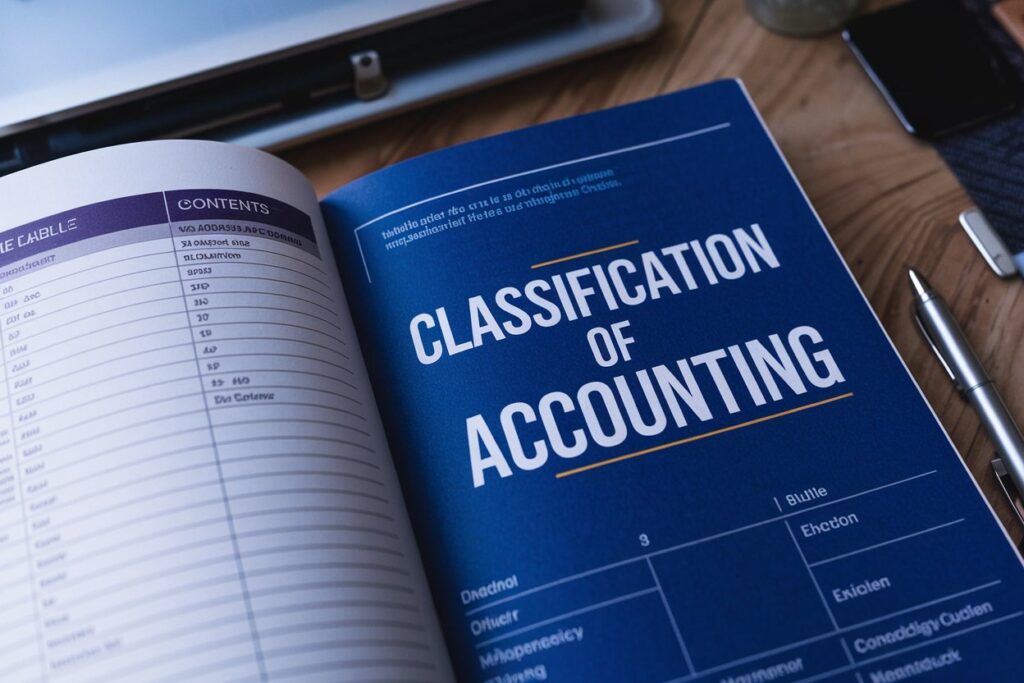The Classification of Accounting
Accounting is often referred to as the language of business, and it plays a critical role in how organizations communicate their financial information. One key aspect of accounting is its classification—understanding the different types enables stakeholders to interpret financial data effectively and make informed decisions. In this article, we will explore the various accounting classifications, their purposes, and their roles in business operations.
Major Classifications of Accounting
1. Financial Accounting
Definition:
Financial accounting focuses on the creation of financial statements that provide an overview of a company’s financial position to external stakeholders, including investors, creditors, and regulatory agencies.
Key Characteristics:
- Reports: Income Statements, Balance Sheets, Cash Flow Statements.
- Standards: Follows Generally Accepted Accounting Principles (GAAP) or International Financial Reporting Standards (IFRS).
- Audience: External users such as investors and regulators.
2. Managerial Accounting
Definition:
Managerial accounting, often called management accounting, is primarily concerned with providing internal management with the information needed to make informed business decisions.
Key Characteristics:
- Reports: Budget forecasts, performance analyses, and cost reports.
- Standards: Not bound by GAAP; more flexible and focused on specific management needs.
- Audience: Internal users, including managers and executives.
3. Cost Accounting
Definition:
Cost accounting focuses on capturing and analyzing costs related to the production or provision of goods and services. It helps in budgeting and financial planning.
Key Characteristics:
- Focus: Determining cost efficiency and profitability.
- Tools: Variance analysis, break-even analyses, and cost-volume-profit analyses.
- Use: Helps businesses optimize their operations.
4. Tax Accounting
Definition:
Tax accounting specializes in issues related to taxation and ensures compliance with tax laws. It involves preparation of tax returns and planning for tax obligations.
Key Characteristics:
- Regulations: Adheres to tax codes and guidelines.
- Focus: Minimizing tax liability and ensuring compliance.
- Audits: Involves tax audits and disputes with tax authorities.
5. Auditing
Definition:
Auditing involves the independent examination of financial information of any entity, regardless of size, with the aim of expressing an opinion regarding the financial statements’ fairness and compliance.
Key Characteristics:
- Type: Internal and external audits.
- Purpose: Verification of accuracy and compliance.
- Outcome: Audit reports that provide an opinion on the financial statements.
6. Forensic Accounting
Definition:
Forensic accounting combines accounting, auditing, and investigative skills to examine financial discrepancies and fraud. It is commonly used in litigation support and criminal investigations.
Key Characteristics:
- Focus: Fraud detection and prevention.
- Tools: Use of investigative techniques and legal guidance.
- Outcome: Reports that may be used in court.
Quick Comparison of Accounting Classifications
| Classification | Focus | Audience | Compliance Standards |
|---|---|---|---|
| Financial Accounting | External Reporting | Investors, Regulators | GAAP/IFRS |
| Managerial Accounting | Internal Decision-Making | Management | None |
| Cost Accounting | Cost Control | Management | None |
| Tax Accounting | Tax Compliance | Internal Finance Teams | Tax Code |
| Auditing | Verification | Stakeholders, Auditors | GAAP |
| Forensic Accounting | Fraud Investigation | Legal Authorities, Courts | None |
Importance of Accounting Classification
The classification of accounting is significant for many reasons:
- Clear Communication: Each classification serves a specific purpose, helping communicate information effectively to the appropriate audience.
- Compliance: Different areas of accounting ensure adherence to laws and regulations, minimizing legal issues.
- Strategic Decision-Making: Managerial and cost accounting help businesses to identify inefficiencies and opportunities for profit maximization.
- Financial Integrity: Auditing and forensic accounting uphold the integrity of financial reporting.
Frequently Asked Questions (FAQs)
Q1: What is the difference between financial and managerial accounting?
A1: Financial accounting focuses on external reporting using standardized formats, while managerial accounting is oriented towards internal decision-making and does not have to adhere to standardized formats.
Q2: Why is cost accounting important for businesses?
A2: Cost accounting helps businesses understand their cost structures, allowing them to control expenses, set pricing strategies, and enhance profitability.
Q3: What role does forensic accounting play in fraud detection?
A3: Forensic accountants apply investigative skills to uncover financial fraud and discrepancies, providing valuable evidence for legal proceedings.
Q4: How do accounting classifications impact business decisions?
A4: Different classifications provide tailored information to various stakeholders, thus facilitating informed and strategic business decisions.
Q5: Are all businesses required to conduct audits?
A5: Not all businesses are required to conduct audits; however, public companies and organizations seeking external financing often must undergo regular audits for regulatory compliance.
Conclusion
Understanding the classification of accounting is essential for anyone engaged in the world of business. Whether you are a business owner, investor, or student of finance, recognizing the various realms of accounting can give you deeper insights into financial health and operational efficacy. By leveraging the principles of different accounting classifications, individuals and organizations can make informed decisions that enhance performance and facilitate growth.
“Accounting is the language of the practical business life.” – Daniel E. Smith
As you navigate through your financial journey, remember that each accounting classification has its unique role, ensuring that you have the information needed for effective decision-making.



